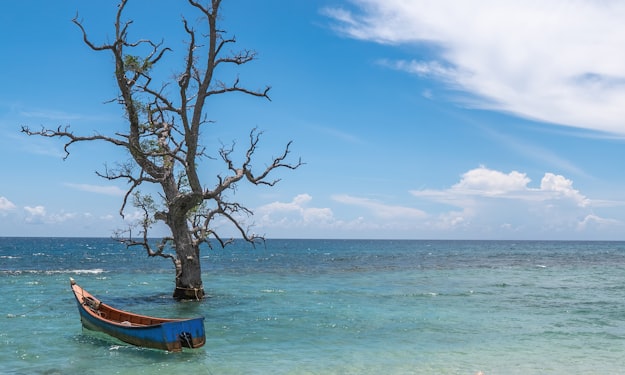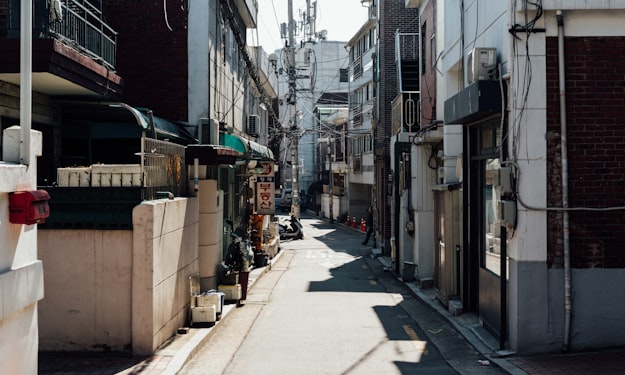culture
Get the authentic cultural experience on your next foreign jaunt. Wander like a local; here, there, and everywhere.


Mind The Gap - Uber Boat
You’d be forgiven if you didn’t know that the Uber Boat is part of the Transport for London network. London has many travel options, including the tube, trains, bus, cable car, Santander bikes, and the river bus.
Tabby LondonPublished 13 days ago in Wander

Airhead Moment in The Highest Building
If you’ve been reading my blogs, you’ll know that I’ve worked on the 48th floor in what once was the tallest building in London - 1 Canada Square. Today, the tallest building is 22 Bishopsgate or Twentytwo, as it’s known.
Tabby LondonPublished 14 days ago in WanderWhat’s the least visited country?
The least visited country globally is Tuvalu, a tiny island nation in the Pacific Ocean. According to the United Nations World Tourism Organization, Tuvalu only hosted 3,700 visitors in 2019. This is significantly lower than the second least visited country, the Marshall Islands, which had 6,000 visitors in the same year. Tuvalu's remote location, limited resources, and small size contribute to its low visitor numbers. However, it offers unique experiences for those who make the journey, including crystal-clear waters, coral reefs, and a rich cultural heritage.
Allwyn Roman WaghelaPublished 14 days ago in WanderThe least visited country in Europe
Moldova, the least visited country in Europe, remains relatively undiscovered for several reasons : 1.) Geographical Location : Moldova is landlocked and situated between Romania and Ukraine. Its location doesn't place it on the typical European tourist route, making it less accessible for travellers.
Allwyn Roman WaghelaPublished 14 days ago in Wander

The Wheel Goes Round
When the London Eye was announced, it was like, please, No. It's too 'out there' for London. We're a sensible global city, not a fairground. Someone, somewhere, thought about bringing London into the 21st Century, which is why it was called the Millennium Wheel. It was before the turn of the new dawn that it was proposed and opened in the new millennium.
Tabby LondonPublished 15 days ago in Wander

Columbia Road Market
Sundays are fun, especially when you visit Columbia Road Flower Market. It's very popular with Londoners and visitors. It's very busy between 10 am and 1 pm.
Tabby LondonPublished 16 days ago in WanderKorea Delight
From bustling cityscapes embellished with neon lights to serene landscapes dotted with historic temples, Korea is a land of contrasts and charming beauty. Nestled in the coronary heart of East Asia, the Korean Peninsula boasts a prosperous tapestry of history, culture, and herbal wonders that have enchanted vacationers for centuries. In this article, we embark on a experience to find the pleasant essence of Korea, exploring its vivid traditions, delectable cuisine, and breathtaking landmarks.
Moharif YuliantoPublished 18 days ago in Wander
Germany
Germany, famend for its prosperous history, breathtaking landscapes, and brilliant culture, presents a culinary trip that is as various as it is delightful. From hearty sausages to indulgent pastries, German delicacies is a social gathering of flavors that captivates the senses and leaves a lasting impact on all who indulge. In this gastronomic journey, we discover the essence of German pleasure via its iconic dishes, regional specialties, and the cultural magnitude they hold.
Moharif YuliantoPublished 18 days ago in Wander- Top Story - April 2024


A Wander Round York
Introduction I'm not so sure how to do this as this was just a weekend wandering round York, taking pictures, talking to people making new friends and luckily having great weather for it.
Mike Singleton - MikeydredPublished 19 days ago in Wander Ukraina Delight
Nestled in the coronary heart of Eastern Europe, Ukraine boasts a prosperous culinary heritage that displays its numerous history, fertile landscapes, and shiny cultural traditions. From hearty alleviation ingredients to refined pastries and savory delights, Ukrainian delicacies affords a pleasant array of flavors and textures that captivate the senses. At the middle of this culinary tapestry lies Ukraina Delight, a series of outstanding dishes that embody the essence of Ukrainian hospitality and culinary artistry. In this article, we embark on a gastronomic experience via the flavors of Ukraina Delight, uncovering the secrets and techniques of its ingredients, preparation, and cultural significance.
Moharif YuliantoPublished 20 days ago in WanderIraq Delight
Nestled between the Tigris and Euphrates rivers, Iraq boasts a culinary heritage as various and wealthy as its history. Iraqi cuisine, formed via centuries of influences from Mesopotamian, Persian, Turkish, and Arab cultures, provides a pleasant array of flavors, spices, and culinary traditions. At the coronary heart of this gastronomic ride lies Iraq Delight, a series of super dishes that embody the essence of Iraqi hospitality and culinary artistry. In this article, we delve into the tantalizing world of Iraq Delight, uncovering the secrets and techniques of its flavors, ingredients, and cultural significance.
Moharif YuliantoPublished 20 days ago in WanderTurkish Delight
Turkish pleasure is a candy deal with recognized and cherished for its style round the world. With its easy texture and candy but barely tangy flavor, this confection has been an imperative section of Turkish delicacies for centuries. The records of Turkish pleasure is rich, harboring many memories and traditions that make this candy deal with unique.
Moharif YuliantoPublished 21 days ago in Wander















